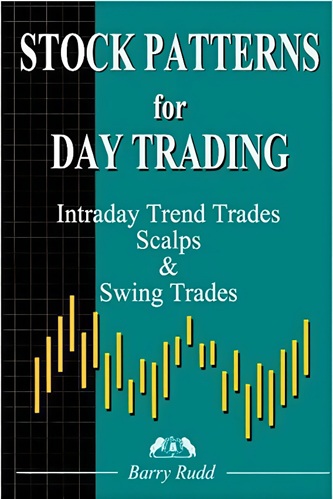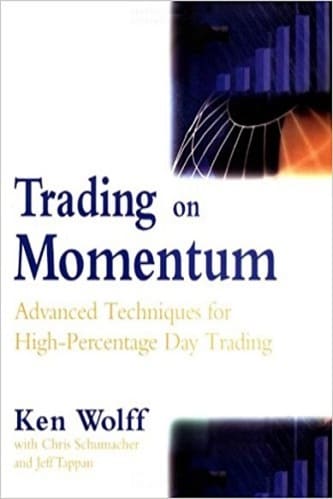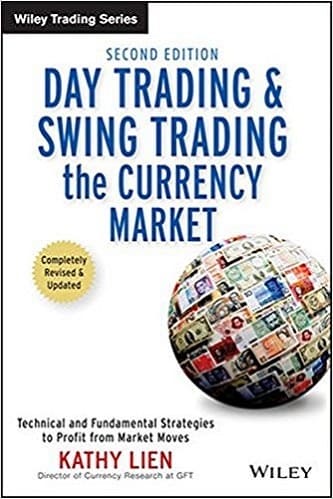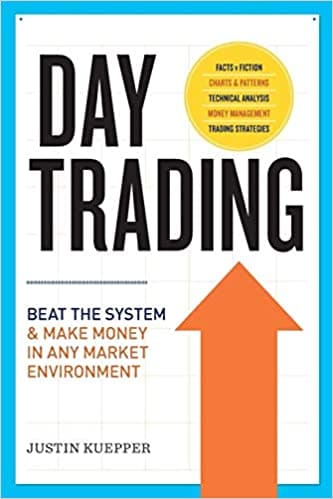Profitable Day and Swing Trading : Using Price / Volume Surges and Pattern Recognition to Catch Big Moves in the Stock Market
$31.57
| Author(s) | |
|---|---|
| Pages |
212 |
| Format |
|
| Publication Year |
2014 |
Written in easy-to-understand language, Profitable Day and Swing Trading explains the trading tactics that draw on price, volume, and pattern recognition. Highly regarded trader Harry Boxer offers the information needed to recognize chart patterns, identify trades, and execute entries and exits that will maximize profits and limit losses.
Introduction:
The trading day does not just begin at the opening bell. Ask any successful trader and you’ll discover he has a routine leading up to the trading day that is nearly as important as what goes on during set trading hours. Preparation is the key to many things in life, and trading is no exception.
In this book, we’ll cover premarket preparation and analysis, which includes a review of the closing patterns from the prior session and a look at the premarket news and resulting price action. Proper premarket preparation always starts with analyzing the closing patterns of interest from the prior session for possible strong “setups” for the next day trade. This should be done after the close of the prior session (or during that evening) before the next session begins.
My strong suggestion is that you do your work when it’s fresh in your mind and prepare your watch lists before the next day, when you should be monitoring premarket news and price action for possible trading candidates. In any case, you are looking for key bullish price action with relatively higher volume than normal, hopefully on a significant price volume surge through a key technical resistance or support level or zone. You should be on the lookout for following bullish/bearish consolidations or orderly retracement patterns such as flags, wedges, coils, pennants, and so on.
The preceding patterns have distinctly different formations, although coils, pennants, and wedges may at first appear similar, and all eventually will move toward an apex or narrowing of price pattern until the lines meet. Coils usually are narrower at the start and then price moves in a smaller decreasing range.
Pennants, although very similar to coils, are usually smaller and tighter and shorter in time. Wedges can and usually do start with a wider price range and appear more symmetrical or triangular than coils before also narrowing toward the apex. Bull flags are more orderly and tend to remain in a parallel pattern, ideally moving in a lateral direction or with a slightly upward or downward micro trend.
These patterns may be precursors or setups for the next move or extension of the prior move, otherwise called a possible new wave or leg up. Stocks that have those characteristics should be put on a “trading watch list” or “focus list,” so they can be closely monitored for possible trades the next session and going forward.
Contents:
- My Journey as a Trader
- Preparing for the Trading Session
- Analyzing Early Trend Development
- My Favorite Day-Trading Patterns
- Using Moving Averages
- Drawing Trend Lines and Why They’re Critical in Analyzing the Trend
- Setting Targets and Price Objectives
- What Kind of Trader Are You?
- Determining and Setting Stops
- Technical Divergences and Loss of Momentum
- The Interpretation and Use of Stochastic Oscillators
- Moving Average Convergence/Divergence
- Bollinger Bands
- Position Sizing and Money Management
- Swing Trading
- Rules and Guidelines to Better Trading
- 38 Steps to Becoming a Successful Trader
Profitable Day and Swing Trading: Using Price / Volume Surges and Pattern Recognition to Catch Big Moves in the Stock Market By Harry Boxer pdf
19 reviews for Profitable Day and Swing Trading : Using Price / Volume Surges and Pattern Recognition to Catch Big Moves in the Stock Market
Clear filtersOnly logged in customers who have purchased this product may leave a review.










Katelyn Shaffer (verified owner) –
Insightful.
Brett Greene (verified owner) –
Big problem with this book is the tiny chart screenshots with a black background that you can hardly see. Pity has it as some interesting content focusing on price pattern entries after price/volume surges. Only referring to stock trading not forex which is my trade, but hel,l I read everything to see if there is the slightest new angle or idea that I have overlooked and I did find a few ideas here, so glad of the purchase. Also comes with a 80 minute online video link that can only be used once, so make sure you buy a new copy, or at least one where the access code hasn’t been accessed in the sealed package at the rear of the book.
Phoenix Dougherty (verified owner) –
Helpful instruction from a proper trader in an area little covered.
Lennon Hancock (verified owner) –
Outstanding work and very profitable for those who swing trade and want to learn how to profit from seasonal investing.
Kian Glenn (verified owner) –
This book is a great way to learn how to use targets and stops to maximize your profits and minimize your losses. I have been a member of the website for a year, Harrys make sense approach to technical trading has completely changed my trading results and I am now making more than ever before. This book lays out technical trading with targets and stops in a make senses and easy to read way. To the negative reviewers I hope that you give the book another look because you are truly missing out and if you think you can read one book and know everything you are crazy! This is a must have book for traders of all experience levels.
Raul Barrett (verified owner) –
It’s the book for novice. No amazing story.
Alessandro Brooks (verified owner) –
great book
Natalia Hamilton (verified owner) –
As stated.
Jason Cunningham (verified owner) –
great book
Prince Norton (verified owner) –
Great book if you want to know how the stock market REALLY works. You’ll want to refer to this frequently!!
Fletcher Wood (verified owner) –
Waste of money. Charts are hard to read and the information on channels and gaps is not new.
Lylah Dalton (verified owner) –
As a follower of Harry Boxer, this book explains in detail the steps and techniques Harry uses to make great trades. This book is a must for new traders.
Brett O’Connor (verified owner) –
It’s nice to see a “back to basics” book. Harry uses price, volume and price patterns. The book is well written and to the point. No fluff here. This is one of those books that you will pick up and re-read it more than once. Well done Harry.
Kayson Lucas (verified owner) –
Good trading material.
Kylee Roman (verified owner) –
Easy to understand ,what you really need to know to be profitable in day and swing trading using basic fundamental technical analysis for every cycle of the Stock market. Harry Boxer shares some of his tactical gems of his extensive
experience as Wall Street investment and technical analyst. Very timely information from a superb educator.
Michelle Molina (verified owner) –
The book by Harry Boxer is an excellent book, and upon receiving the book, I thought it was over-priced, but the wealth of knowledge contained inside the book made it worth every penny. The only thing I didn’t care for are the graphs which appear were slightly blurred. Other than that, I would highly recommend the book
Jasmine Kirk (verified owner) –
There are many approaches to day trading. Harry has a consistent and practical one, and it works. I can say that because I’ve been in his web chat for a while and once I got the hang of it, it started making good money for me. In this book he comes as close as possible on paper to laying his system out for you. The book is lean and to the point, but it hits all the essentials. To really “get it” however you need to hear him in action, watch him mark up charts and discuss them in real time, because written rules only go so far and beyond that it’s all about learning to recognize patterns. My suggestion is to first read the book, and then, if his system seems right for you, watch some of his videos, or better yet take the two-week free trial of his web chat room and just sit back and watch, book in hand. It won’t cost you anything and you’ll learn a lot.
Blaire Day (verified owner) –
The book is very technical to & needs deep concentration There are charts that show the patterns that the best traders utilize from r the everyday trading rules.
Charli Melton (verified owner) –
I want to preface my comments by saying I have known the author, Harry Boxer, for over 45 years. I am also a member of his trading room, TheTechTrader.com. Having written my disclaimer, I want to highly reccomend Profitable Day and Swing Trading. This is not just another trading book, but a roadmap to both success and a long term career. I like most traders have shelves of trading books collecting dust and never looked at after the first read. Profitable Day and Swing Trading will be on most traders workspace, constantly being refered to. I can visualize printing out charts and comparing them to all the examples in the book. In conclusion, if you want to be a successful trader you owe it to yourself to have a copy of Profitable Day and Swing Trading.